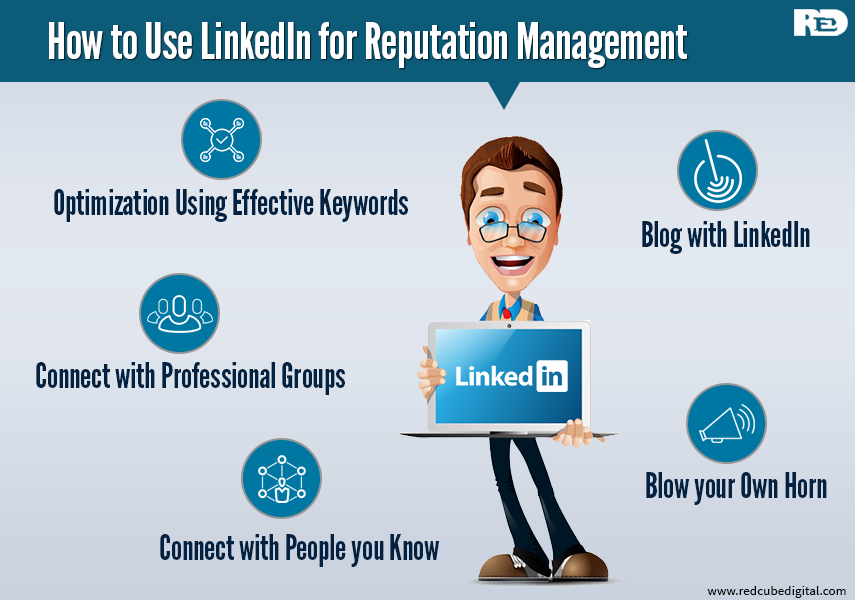27
5 Smart Ways to Use LinkedIn for Reputation Management
27th January 2015As a brand, we constantly make efforts to improve our reputation, and create a positive image. Most often, we head straight to Google as our one stop solution for everything. How do you manage reputation using Google? You search for content framed negatively about your brand, or possibly search for keywords that are relevant to your brand. Definitely, an important element of reputation management, but is that all you can do to save your face online?
While Google is definitely a sure shot solution for reputation management, it is not the be all and end all of online reputation. With the soaring popularity of LinkedIn, you can Inflatable water slides Canada definitely consider it as an essential tool for reputation management.
A recent statistics suggests about 107 million users in US making LinkedIn one of the biggest networking sites ever. Apart from the huge population present on LinkedIn, it also possesses certain effective tools which sets it apart from other networking sites, and makes it immensely useful for reputation management.
The question still remains, how to use LinkedIn for reputation management. Here are 5 smart ways in which you can use LinkedIn for reputation management.
LinkedIn, like Google, uses keywords to define and optimize your image online. With the right keywords, you can target your audience and make your profile visible to your target. Things become authentic and easy with the right keywords on your profile.
Keywords are not definitive in this case. Adjectives can also become keywords, and that’s the beauty of this process on LinkedIn. Where all can you use keywords? You can use some of the credible keywords marking the headline of your profile, in the company name section, in the job title or in the skill section. Basically, you need to pull in efforts to optimize your profile by making use of keywords that are popular, effective and have some credibility.
When you write a social media post, or a blog where you boast about your achievements, or brag about your accomplishments, it does not create a major impact on your audiences. In fact, most people find this bragging attitude of a brand a complete put off.
But, with LinkedIn things are different. You are asked to brag about your brand, and its accomplishments in your profile page. With awards and recognition added to your profile, it gains credibility and you get the trust from your target. Make sure you don’t lie about your achievements or accomplishments on your profile page.
While it is definitely a great idea to increase and improve your connections, reputation management suggests you should connect with people you know. Most brands and people believe in connecting with everyone who is relevant to them, but such networking will not prove to be credible for your reputation. Sometimes, the people you are trying to connect with might not like it, as they don’t know you. Fury, aggression and other emotions might betray your chance of cleaning up your image.
Ask your connections to recommend you, endorse you, and talk about you. With such positive connections, building your reputation and connecting with more people becomes easy.
LinkedIn may not suggest adding people you don’t know, but it offers ways to network. You can join the different professional groups and network your brand effectively. Join groups where professionals who share the same interests are present. Interact with these professionals through such networking groups, and slowly build positive connections.
Join groups that are relevant to your business. With each group, you enhance your reputation and build a positive image in the eyes of your target audience. Choose your groups wisely, and keep interacting with the people in the groups to build your network. You should at least join 10 groups to manage your reputation well.
LinkedIn has come up with the blogging feature which you can easily use to build your reputation. This is useful when you are planning to connect with B2B audiences. If you want to share some content with people in your network, or wish to boost your image on LinkedIn, you can use the blogging feature effectively. Make sure you have written positive things sing this blogging feature, as it has a good reach.

